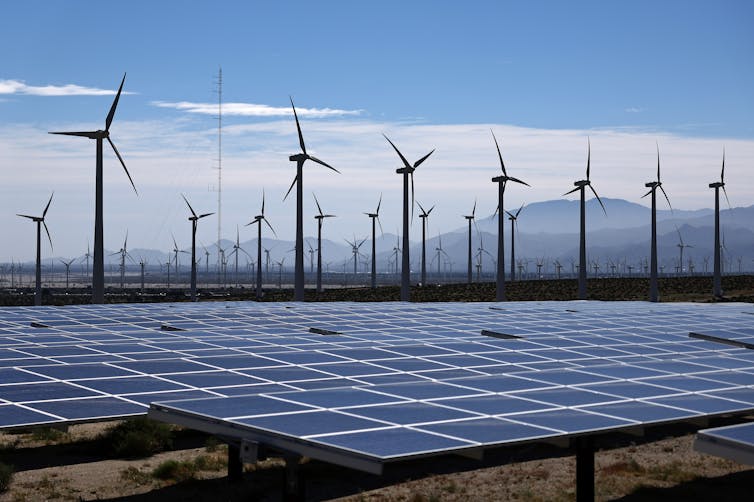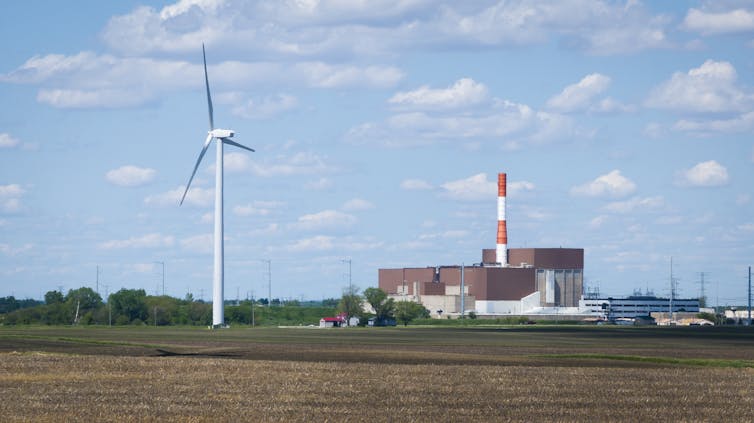How the ‘Big Beautiful Bill’ positions US energy to be more costly for consumers and the c
June 10, 2025
When it comes to energy policy, the “One Big Beautiful Bill Act” – the official name of a massive federal tax-cut and spending bill that House Republicans passed in May 2025 – risks raising Americans’ energy costs and greenhouse gas emissions.
The 1,100-page bill would slash incentives for green technologies such as solar, wind, batteries, electric cars and heat pumps while subsidizing existing nuclear power plants and biofuels. That would leave the country and its people burning more fossil fuels despite strong popular and scientific support for a rapid shift to renewable energy.
The bill may still be revised by the Senate before it moves to a final vote. But it is a picture of how President Donald Trump and congressional Republicans want to reshape U.S. energy policy.
As an environmental engineering professor who studies ways to confront climate change, I think it is important to distinguish which technologies could rapidly cut emissions or are on the verge of becoming viable from those that do little to fight climate change. Unfortunately, the House bill favors the latter while nixing support for the former.
Renewable energy
Wind and solar power, often paired with batteries, are providing over 90% of the new electricity currently being added to the grid nationally and around the world. Geothermal power is undergoing technological breakthroughs. With natural gas turbines in short supply and long lead times to build other resources, renewables and batteries offer the fastest way to satisfy growing demand for power.
However, the House bill rescinds billions of dollars that the Inflation Reduction Act, enacted in 2022, devoted to boosting domestic manufacturing and deployments of renewable energy and batteries.
It would terminate tax credits for manufacturing for the wind industry in 2028 and for solar and batteries in 2032. That would disrupt the boom in domestic manufacturing projects that was being stimulated by the Inflation Reduction Act.
Deployments would be hit even harder. Wind, solar, geothermal and battery projects would need to commence construction within 60 days of passage of the bill to receive tax credits.
In addition, the bill would deny tax credits to projects that use Chinese-made components. Financial analysts have called those provisions “unworkable,” since some Chinese materials may be necessary even for projects built with as much domestic content as possible.
Analysts warn that the House bill would cut new wind, solar and battery installations by 20% compared with the growth that had been expected without the bill. That’s why BloombergNEF, an energy research firm, called the bill a “nightmare scenario” for clean energy proponents.
However, one person’s nightmare may be another man’s dream. “We’re constraining the hell out of wind and solar, which is good,” said Rep. Chip Roy, a Texas Republican backed by the oil and gas industry.

Mario Tama/Getty Images
Efficiency and electric cars
Cuts fall even harder on Americans who are trying to reduce their carbon footprints and energy costs. The bill repeals aid for home efficiency improvements such as heat pumps, efficient windows and energy audits. Homeowners would also lose tax credits for installing solar panels and batteries.
For vehicles, the bill would not only repeal tax credits for electric cars, trucks and chargers, but it also would impose a federal $250 annual fee on vehicles, on top of fees that some states charge electric-car owners. The federal fee is more than the gas taxes paid by other drivers to fund highways and ignores air-quality and climate effects.
Combined, the lost credits and increased fees could cut projected U.S. sales of electric vehicles by 40% in 2030, according to modeling by Jesse Jenkins of Princeton University.
Nuclear power
Meanwhile, the bill partially retains a tax credit for electricity from existing nuclear power plants. Those plants may not need the help: Electricity demand is surging, and companies like Meta are signing long-term deals for nuclear energy to power data centers. Nuclear plants are also paid to manage their radioactive waste, since the country lacks a permanent place to store it.
For new nuclear plants, the bill would move up the deadline to 2028 to begin construction. That deadline is too soon for some new reactor designs and would rush the vetting of others. Nuclear safety regulators are awaiting a study from the National Academies on the weapons proliferation risks of the type of uranium fuel that some developers hope to use in newer designs.

Scott Olson/Getty Images
Biofuels
While cutting funding for electric vehicles, the bill would spend $45 billion to extend tax credits for biofuels such as ethanol and biodiesel.
Food-based biofuels do little good for the climate because growing, harvesting and processing crops requires fertilizers, pesticides and fuel. The bill would allow forests to be cut to make room for crops because it directs agencies to ignore the impacts of biofuels on land use.
Hydrogen
The bill would end tax credits for hydrogen production. Without that support, companies will be unlikely to invest in the seven so-called “hydrogen hubs” that were allocated a combined $8 billion under the Bipartisan Infrastructure Law in 2021. Those hubs aim to attract $40 billion in private investments and create tens of thousands of jobs while developing cleaner ways to make hydrogen.
The repealed tax credits would have subsidized hydrogen made emissions-free by using renewable or nuclear electricity to split water molecules. They also would have subsidized hydrogen made from natural gas with carbon capture, whose benefits are impaired by methane emissions from natural gas systems and incomplete carbon capture.
However it’s made, hydrogen is no panacea. As the world’s smallest molecule, hydrogen is prone to leaking, which can pose safety challenges and indirectly warm the climate. And while hydrogen is essential for making fertilizers and potentially useful for making steel or aviation fuels, vehicles and heating are more efficiently powered by electricity than by hydrogen.
Still, European governments and China are investing heavily in hydrogen production.

Kevin Carter/Getty Images
Summing it up
The conservative Tax Foundation estimates that the House bill would cut the Inflation Reduction Act’s clean energy tax credits by about half, saving the government $50 billion a year. But with fewer efficiency improvements, fewer electric vehicles and less clean power on the grid, Princeton’s Jenkins projects American households would pay up to $415 more per year for energy by 2035 than if the bill’s provisions were not enacted. If the bill’s provisions make it into law, the extra fossil fuel-burning would leave annual U.S. greenhouse gas emissions 1 billion tons higher by then.
No one expected former President Joe Biden’s Inflation Reduction Act to escape unscathed with Republicans in the White House and dominating both houses of Congress. Still, the proposed cuts target the technologies Americans count on to protect the climate and save consumers money.
Search
RECENT PRESS RELEASES
Related Post




